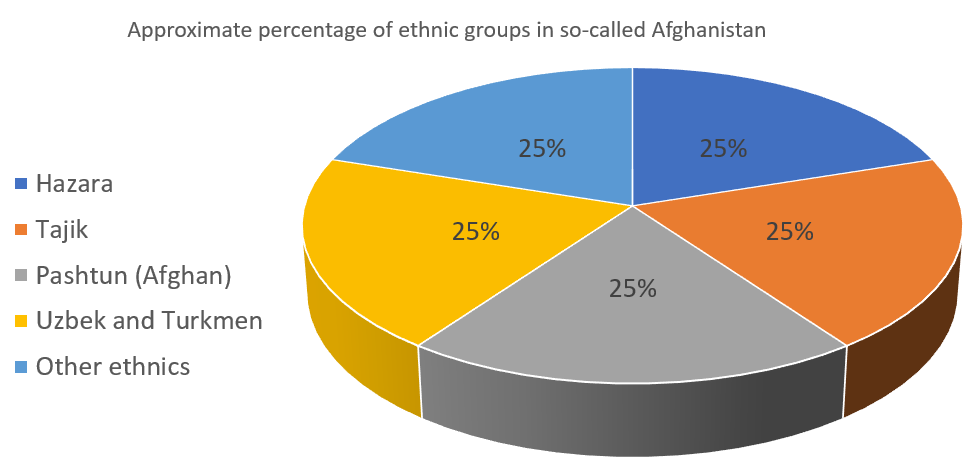
Ethnics of So-called Afghanistan: State Department and False Information
Reading time: (Number of words: )
It is not the first time that the U.S departments and agencies circulate false information about the population of so-called country Afghanistan and its ethnic groups. In the latest report of the State Department on International Religious Freedom, it is stated that “According to the Pew Forum, Shia make up approximately 10-15 percent of the population. According to religious community leaders, the Shia population, approximately 90 percent of whom are ethnic Hazaras, is predominantly Jaafari, but it also includes Ismailis.” Many Hazara, including politicians and activists, reacted to the report, asking the U.S. State Department not to circulate false data when there is no transparent and comprehensive population census conducted in so-called Afghanistan.
According to Minority Rights Group International, the Hazara were once the largest ethnic group constituting nearly 67 percent of the total population of the state before the 19th century. According to the Hazara historians and many international researchers, about 62% of the Hazara massacred in the hand of Pashtun tribal leader Abdur Rahman and his Pashtun tribes in the last decade of 19th century, and most parts of Hazaristan such as Kandahar, Zabul, Helmand, Ghazni, and Oruzgan invaded. The Pashtun regimes and their radical groups such as the Taliban continue massacring the Hazara, however many Hazara believe that they make at least 30% of the population in so-called country Afghanistan.
The majority of Shias in so-called Afghanistan are indeed the Hazara, but the Hazara nation consists of a variety of religious and non-religious groups. According to the leaders of Sunni Hazara, the population of Sunni Hazara is at least five million living in Hazaristan, the Uzbek, Turkmen and Tajik populated areas including South-Turkistan and the rest of so-called Afghanistan which mainly populated or invaded by Pashtun tribes. The majority of Ismailis in so-called Afghanistan are also the Hazara. There are also Buddhists, Christians, and non-religious among the Hazara, particularly among the young generation, many are humanists not practicing any religion.
While there is no transparent and comprehensive census, the Pashtunist governments tried to keep the power in the hand of Pashtuns by totalitarian governments or terrorist groups such as the Taliban besides falsifying the ethnic population and systematic frauds in the last elections. For instance, Ashraf Ghani Ahmadzai, one of Pashtun politicians and supporters of the Taliban, states that the population of Bamyan in Hazaristan is approximately 100 000. However, putting statistics from the Education ministry and Election commission reveals that at least 350 000 who were able to vote (over 18 years old) and not able to vote (under 18 years old) in two last so-called presidential elections. Such falsified information about the Hazara is too much, mainly provided by Pashtunist governments and Pashtun agents of CIA. Any information about the quantity of the ethnic groups is not reliable and cannot be the source for research or actions such as the distribution of international aids to so-called Afghanistan.
Related Articles

Poet and Information Systems Specialist
Kabul Press? Chief Editor and Publisher
Hazara from Hazaristan

Poems for the Hazara
The Anthology of 125 Internationally Recognized Poets From 68 Countries Dedicated to the Hazara
Order Now








